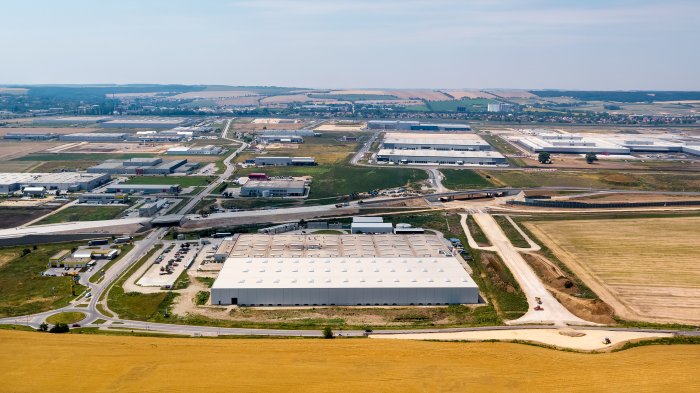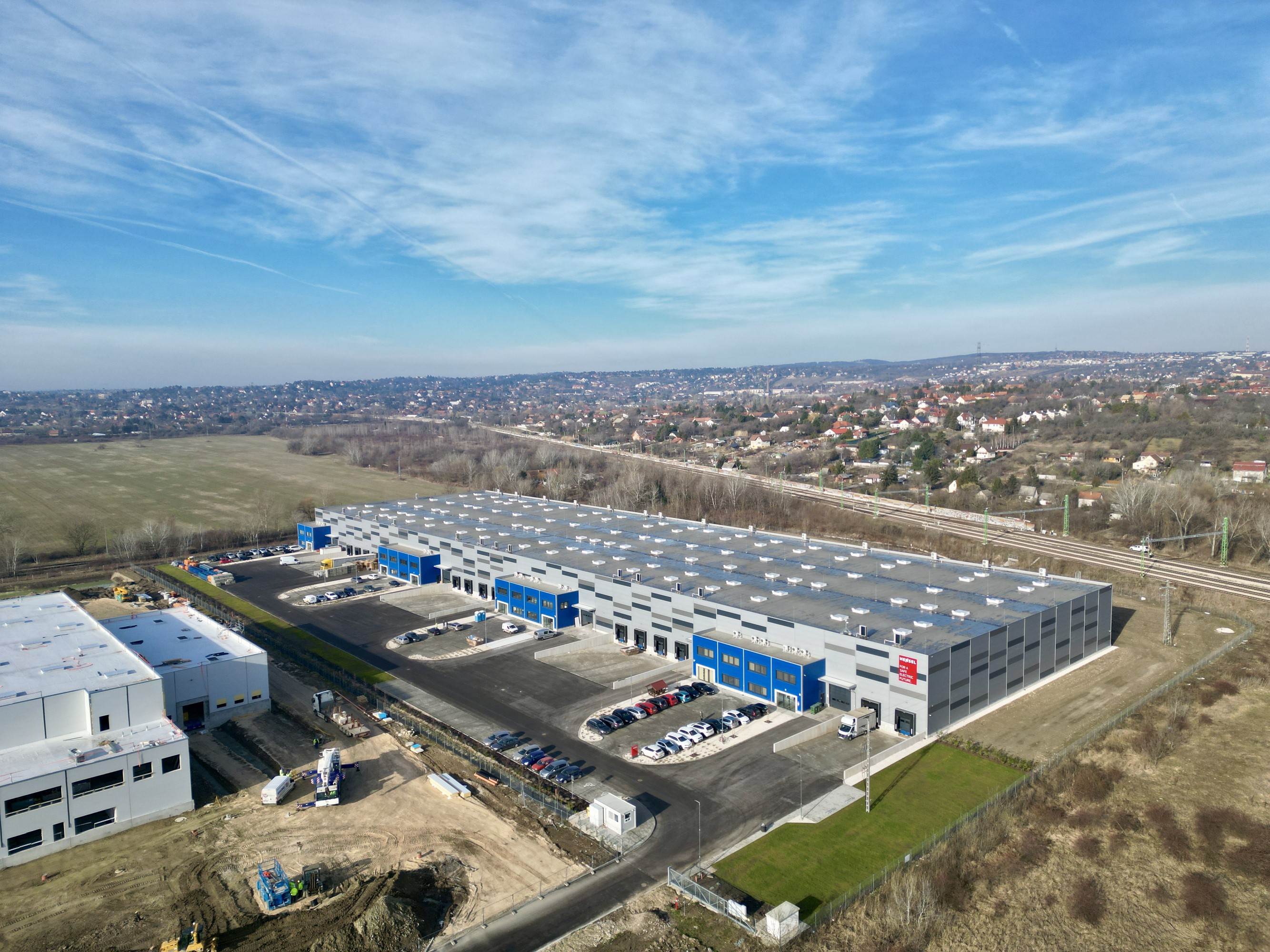Industrial Demand in Central Europe Continues to Rise

The Central European industrial and logistics market is continuing to record high demand, reflecting the indicators in the wider European industrial markets; take-up in Poland, for example, was over 4 million in 2018.
CTPark Nitra.
Total Central European industrial stock has surpassed the 27 million sqm threshold and the CEE region (Czech Republic, Hungary, Poland, Romania, and Slovakia) there is low vacancy at 5% or lower (in all markets apart from Slovakia). Hungary for example has circa 2.4% vacancy and Romania 3%, according to Cushman & Wakefield.
Tenants now have to plan in the long-term in order to source space. At the same time, developers are now committed to delivering higher specified and sustainability accredited space in response to tenant demand.
Poland and Czech Republic continue to be the dominant markets: supply for the two for 2018 was around 2.2 million sqm and 735,000 sqm respectively, compared to 127,000 sqm for Hungary, according to Cushman & Wakefield.
The Budapest industrial market is going through a resurgence but suffers from limited development. Romania’s industrial market is attracting significant development, on the other hand, with an estimated 435,000 sqm of new supply for 2018.
Poland passed a new milestone last year, as industrial stock stood at close to 16 million sqm across Warsaw and several provincial logistics hotspots, compared to 2.2 million sqm in Hungary.
“Poland is emerging as the core logistics hub in the CEE region as it benefits from its strategic, central location in Europe, enabling efficient, cross-border distribution operations,” said Cushman & Wakefield Poland.

Prologis Park Pilsen in Czech Republic.
New Supply
New supply has taken industrial stock across Czech Republic to the 7.7 million sqm mark. In Prague, Prologis has delivered an additional 38,000 sqm of space at Prologis Park Prague-Airport, 27,000 sqm of which is built-to-suit and 11,000 sqm is speculative space. Prologis has purchased a further six development plots in Czech Republic.
Its total Central European Prologis portfolio (taking in Czech Republic, Hungary, Poland, Slovakia) consists of four million sqm of logistics and industrial space with an overall occupancy rate of circa 95% as of the turn of the year.
Its most notable activity was in Poland, where the portfolio consisted of 1.8 million sqm and leasing activity reached 723,000 sqm in 2018. Prologis started the development of nine speculative buildings and four BTS facilities totaling 250,000 sqm of space in 2018.
The company is developing a 10,600 sqm speculative facility at Prologis Harbor Park in greater Budapest, and has also undertaken development of a 40,000 sqm speculative facility at Prologis Park Brno in Czech Republic in what the company describes as a “disciplined increase in speculative building” across its European portfolio.
“Our strongest markets include Germany, the Netherlands, Czech, Italy, Spain. Hungary and Sweden in order of net operating income,” commented Ben Bannatyne, president of Prologis Europe.
In the current market environment with high demand and low availability, companies requiring space need to plan far ahead. Further, in the current landlord favorable market, the majority of development is undertaken on a BTS basis as developers are quickly able to conclude BTS deals for available development space.
“The difference between BTS and speculative is a bit misleading nowadays, as most of the delivery is taken by tenants at the planning stage or during the construction phase. So there is not as much typical speculative construction as there was in the past,” commented Ferdinand Hlobil, head of CE industrial at Cushman & Wakefield.
Budapest-centric
In contrast to Czech Republic, Poland, Romania and Slovakia, a functioning commercial industrial market has not developed outside the capital in Hungary and companies establishing light industrial facilities have tended to develop their own facilities.
Romania with its network of large regional cities, is now undergoing sustained industrial development. CTP is extending the 400,000 sqm CTPark Bucharest West and plans to make it one of the largest business parks in Central Europe. The company currently has as much as one million sqm of industrial and logistics space in Romania in 13 parks with 300,000 sqm completed in 2018.
“We have doubled the size of our CE portfolio since 2014, with five million under roof and a landbank to develop anther three million,” commented Remon Vos, CEO of CTP.
The established CEE industrial park operators and developers have been reluctant to enter the
SEE markets and therefore there is a very limited provision of modern, speculative industrial and logistics space.
Most tenants do not want to sign long-term leases and developers have not, therefore, developed speculative projects in the view of Andrew Peirson, managing director of SEE at CBRE.
However, CTP is extending its logistics park network to Serbia with a EUR 75 million investment. Its first development under construction is the 14,000 sqm CTPark Belgrade West on a 2.5 hectare site and the 23,000 sqm CTPark Novi Sad on a six hectare site close to the Hungarian border.
CTPark Belgrade North has the potential for 65,000 sqm of space on a 15 hectare site with the 25,000 sqm first phase currently under construction. The company aims to deliver 70,000 sqm of space by the end of the year and says it is looking to source further developments sites.
SUPPORT THE BUDAPEST BUSINESS JOURNAL
Producing journalism that is worthy of the name is a costly business. For 27 years, the publishers, editors and reporters of the Budapest Business Journal have striven to bring you business news that works, information that you can trust, that is factual, accurate and presented without fear or favor.
Newspaper organizations across the globe have struggled to find a business model that allows them to continue to excel, without compromising their ability to perform. Most recently, some have experimented with the idea of involving their most important stakeholders, their readers.
We would like to offer that same opportunity to our readers. We would like to invite you to help us deliver the quality business journalism you require. Hit our Support the BBJ button and you can choose the how much and how often you send us your contributions.









